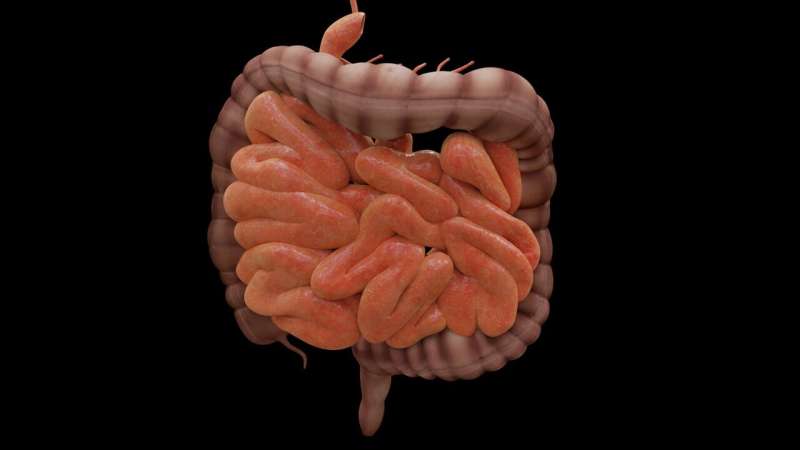This article has been reviewed according to Science X's editorial process and policies. Editors have highlighted the following attributes while ensuring the content's credibility:
fact-checked
peer-reviewed publication
trusted source
proofread
Pathogenic bacteria use a sugar in the intestinal mucus layer to infect the gut, study shows

A new study by researchers at the University of British Columbia (UBC) and BC Children's Hospital shows the sugar sialic acid, which makes up part of the protective intestinal mucus layer, fuels disease-causing bacteria in the gut.
The findings, published in PNAS, suggest a potential treatment target for intestinal bacterial infections and a range of chronic diseases linked to gut bacteria, including inflammatory bowel disease (IBD), celiac disease, irritable bowel syndrome and short bowel syndrome.
"Bacteria need to find a place in our intestines to take hold, establish and expand, and then they need to overcome all the different defenses that normally protect our gut," says Dr. Bruce Vallance, a professor in the department of pediatrics at UBC and investigator at BC Children's Hospital. "In the future, we can potentially target this sugar, or how pathogens sense it, to prevent clinically important disease."
Inflammatory diseases such as IBD are on the rise in children, and because of their immature immune systems, kids are more susceptible to gut bacterial infections. Dr. Vallance and his team, including lead author and UBC graduate student Qiaochu Liang and UBC research associate Dr. Hongbing Yu, sought to understand what enables these bacterial pathogens to survive and expand inside our intestines.
For the study, the researchers examined Citrobacter rodentium, an intestinal bacterial pathogen of mice that's used to model infections with human E. coli. The team discovered that the bacteria have genes involved in sialic acid consumption, and when these genes are removed, the bacteria's growth is impaired.
Further investigation revealed that upon consuming the sugars, the bacteria produced two special virulence proteins that help the bacteria cross the colonic mucus layer and stick to the underlying epithelial cells. The findings reveal how the bacteria can change over time and actually worsen disease.
"You start off with IBD, your microbes change, they start digging their way into the cells lining your gut, causing more inflammation, and that may be one reason why IBD becomes chronic," says Dr. Vallance. "Specific nutrients such as sialic acid or other sugars might be Achilles heels for them in terms of things you could target to remove dangerous bacteria from the intestine."
Dr. Vallance and his team are now examining the role other sugars in the gut may play in feeding pathogenic bacteria. They're also looking for resident good bacteria (probiotics) that could out-compete the dangerous bacteria, stealing the sugars away from them.
They also plan to explore potential interactions between resident and pathogenic bacteria. Pathogenic bacteria can't access the sugars on their own and thus, some of the normally harmless resident bacteria must serve as accomplices.
"Basically, these accomplices cut the sugar off the mucus, and then either they hand it to the dangerous bacteria or the dangerous bacteria have come up with a way of stealing it from them," he explains.
A better understanding of these interactions could provide new ways to block pathogenic bacteria, something Dr. Vallance says is urgently needed.
"In the past, our ancestors were constantly assaulted by dangerous bacteria," says Dr. Vallance. "With the advent of more and more antibiotic resistance in bacteria, these bacterial infections are going to become a growing problem again. Without new antibiotics, we need to come up with novel ways to fight these bacteria, like starving them."
More information: Liang, Qiaochu et al, Sialic acid plays a pivotal role in licensing Citrobacter rodentium's transition from the intestinal lumen to a mucosal adherent niche, Proceedings of the National Academy of Sciences (2023). DOI: 10.1073/pnas.2301115120. doi.org/10.1073/pnas.2301115120




















